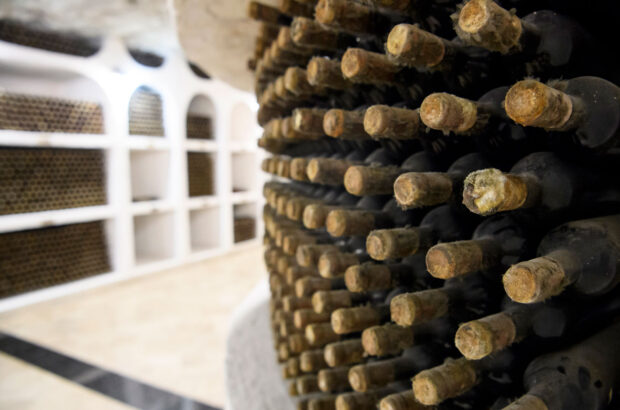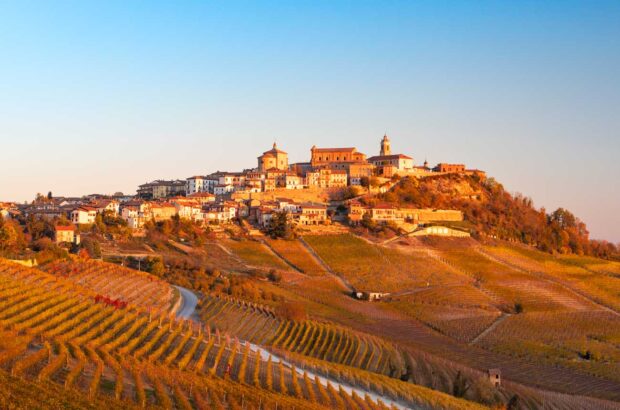The European import Listán Prieto, known in Argentina as Criolla Chica, joined the cast of quality red grapes approved by the country’s Instituto Nacional de Vitivinicultura (INV) in legislation published on 16 August.
It joins better-known counterparts, such as Malbec, Cabernet Sauvignon, Pinot Noir and Bonarda, in the list of varieties approved for the production and labelling of quality red wine, and can include Geographical Identification (IG) or Denomination of Origin (DOC) classification. All Criolla grapes were so far on the list of approved rosé varieties preventing Argentine producers from producing a lighter style of red, labelled as such. The resolution opens the doors for Argentine wineries to present and export fresher, lighter-hued red for which there is increasing demand.
Timely renaissance
A member of the criolla (creole) family that includes multiple varieties – Cereza, Criolla Grande, Pedro Gimenéz and various Moscatels and Torrontés – commonly grown in South America following the conquista – the pale-skinned big-berry grape has been cultivated in Argentina since the 17th century. From Quebrada de Humahuaca, at 2,600 metres above sea level, to the provinces of Catamarca, San Juan and Mendoza, the variety’s ability to express terroir is appreciated by winemakers. The grape also appeals to a new generation of consumers seeking fresh, lighter wines.
Criolla Chica (also known as País in Chile and Mission in California) has, along with other varieties of the criolla family, experienced an exciting renaissance in the last decade. The Cara Sur project, founded in 2011 by husband-and-wife teams Sebastián Zuccardi and Marcela Manini and Pancho Bugallo and Nuria Año Gargiulo, played a central and pioneering role. ‘After visiting old vineyards around the world, we understood the diversity they bring to viticulture,’ said Bugallo. The two couples started rescuing ancient vines in the Calingasta Valley in 2011; in 2014 Cara Sur bottled its first Criolla Chica from 100-year-old vines in Barreal, and today produces 50,000 bottles.
In 2016, Matías Michelini of Passionate Wines embarked on the same quest after unearthing an 80-year-old trellis vineyard in Uco Valley. According to Michelini, preserving culture and tradition is fundamental. ‘Rescuing vines so old that they are like trees maintains our heritage and honours our forebears,’he says. ‘In these wines you can truly savour the wisdom of the passage of time.’ Michelini has also partnered with winemaker Pancho Lavaque to save historical plots in Calchaquíes Valley, and with Bodega El Bayeh in Quebrada de Humahuaca.
About a decade ago, the Mendoza branch of the National Agricultural Technology Institute (INTA) began recovering criolla varieties. Fast forward to this year and to a collaboration between producers, the INV and the INTA which helped drive the new legislation forward. ‘We’ve been testing the use of Criolla Chica for the production of still and sparkling wine, using different clones,’ explains Jorge Prieto, researcher at the INTA. ‘Several months ago, some producers asked the INV for its records and began gathering more data, until the resolution to incorporate Criolla Chica into IG and DOC was granted.’
Enthusiasm for Criolla Chica has grown slowly but surely, somewhat hindered by the challenges it poses for winemakers accustomed to producing full-bodied reds and unsure how to deal with high tannins in the absence of colour. For others this is what makes the variety so appealing. ‘Its naturally high tannic structure makes it very interesting,’ says Zuccardi. ‘The grapes have but a red blush, but their tannins give them texture.’

Old Criolla Chica vines in the Calingasta Valley | Courtesy of Cara Sur
Ongoing quest
Criolla Chica is being championed by a growing number of producers – mavericks as well as well-established names.
Cara Sur and Michelini started planting new vines with others following suit. ‘It’s important to preserve genetic information, and these vineyards are amazing living germplasm [genetic resources preserved for breeding, research and/or conservation] banks,’ said Bugallo.
In Paraje Altamira (Uco Valley, Mendoza), Rocamadre’s Juanfa Suárez has been making Criolla Chica aged for six months in used French oak since 2019. His aim is to further explore the variety’s full potential. ‘This spring I’ll be planting Criolla Chica on granite and limestone soils in Altamira. I want to push it to complex, undiscovered heights,’ he said.
In the Uco Valley, Bodega Lagarde, Riccitelli Wines and Cadus harvest the variety in, respectively, Tupungato, Los Chacayes and Vista Flores; Matías Morcos in San Martín and Catena Zapata in Rivadavia lead the movement in Eastern Mendoza, while, further south, Bodega Chacho works with fruit from San Rafael.
To the north of the country, Tacuil and El Esteco produce Criolla Chica in the Calchaquíes Valley IG. Meanwhile, Bodega El Bayeh (with Matías Michelini consulting) and Bodega Kindgard source grapes from vines owned by local families in Quebrada de Humahuaca.
The new legislation has been published and is available in the Argentine government’s official bulletin.






